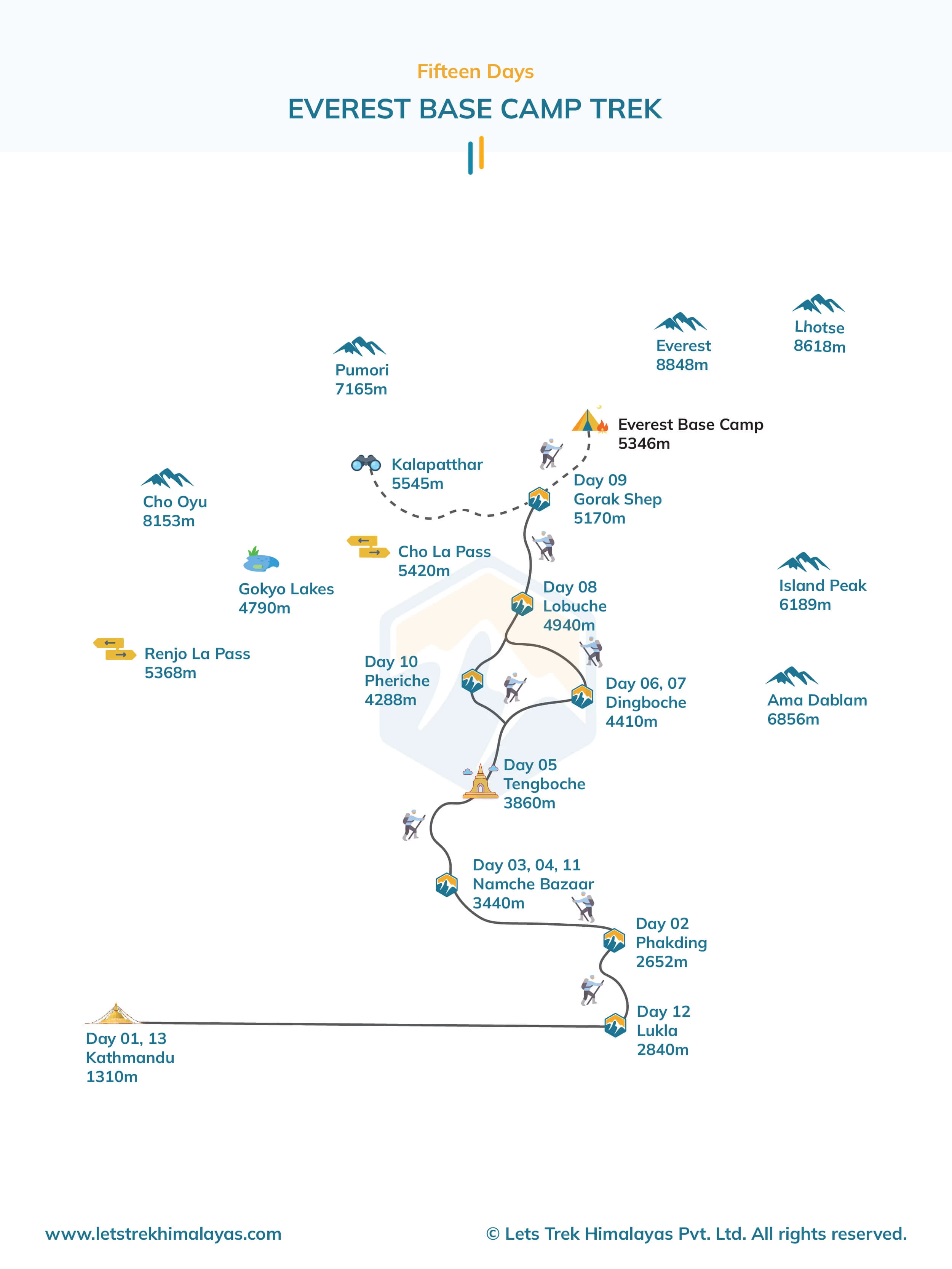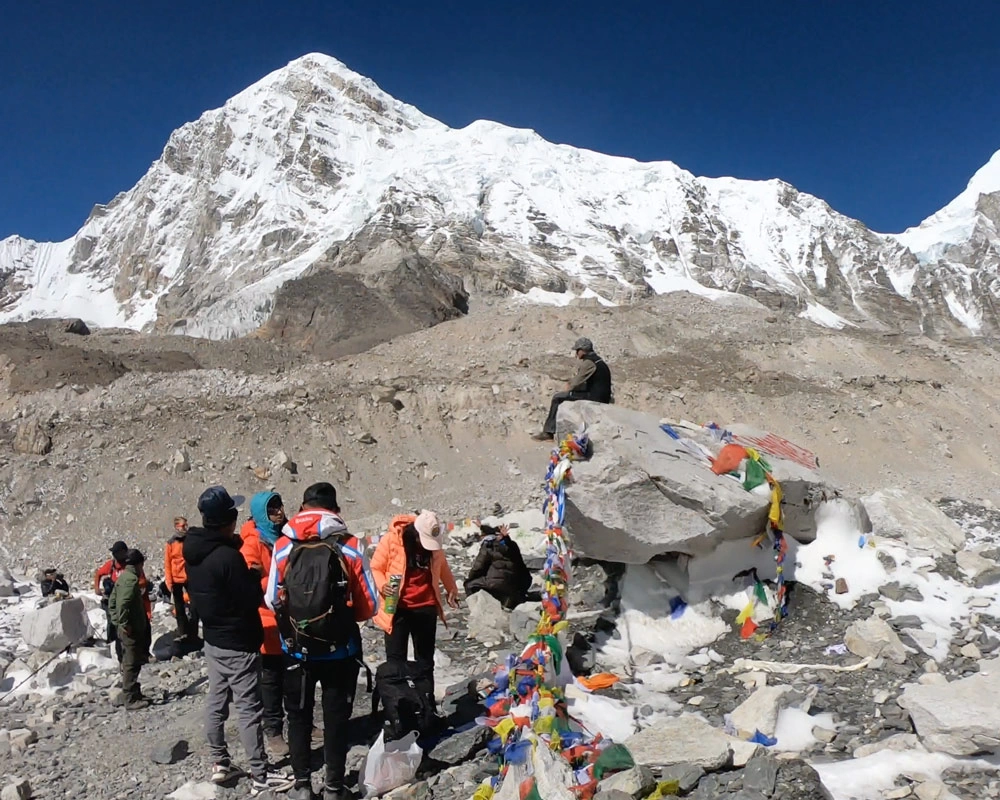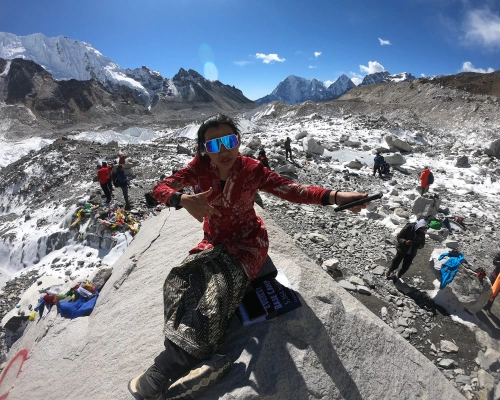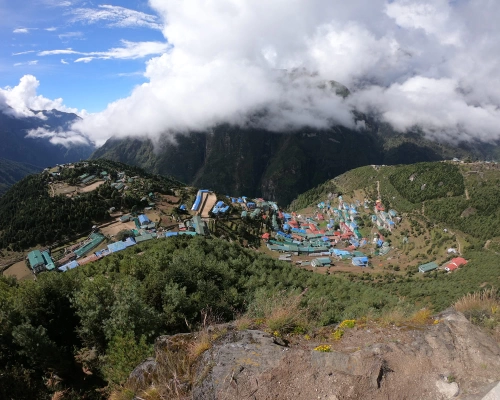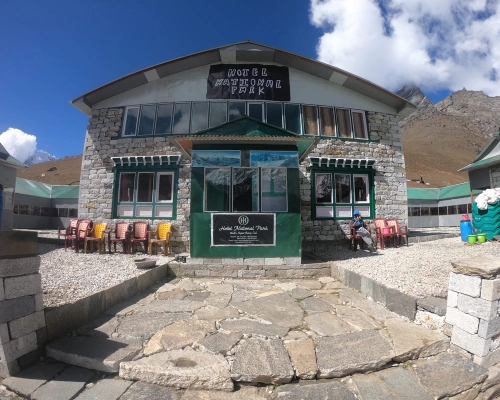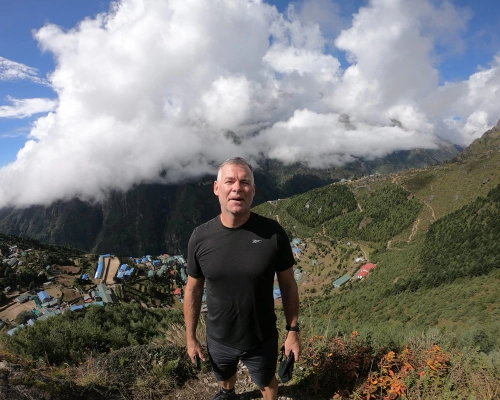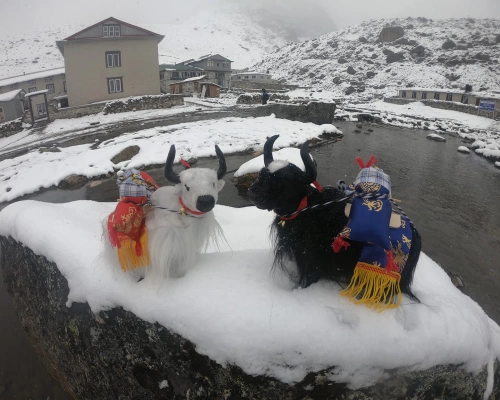Everest Base Camp Trek is a fantasy that many adventure seekers have on their bucket lists. Trekking to Everest Base Camp (5364 m) takes place in Nepal's Everest region (Sagarmatha National Park). This trekking route is rich in natural beauty, with gorgeous mountains, historic Buddhist temples, and breathtaking mountain vistas.
You take a flight from Kathmandu in a small plane that leads you to the famous Lukla Airport at 2810m, where every Everest Trek begins. Following your arrival, you will get a chance to meet the other members of a team with your Sherpa guide. You will then walk on a scenic path to Phakding which roughly takes 3 hours, once you reach Phakding you will be astounded by the spectacular scenery of the Himalayan range.
The next day of trekking we'll show up at the entry to Sagarmatha National Park, where you'll get your permit inspected. The day onwards is difficult as the trail ascends to Namche Bazaar a great tourist hub in the Everest region at an altitude of 3450m where you will catch your first glimpse of Mount Everest.
Acclimatization day is a must to prevent Altitude Sickness you will take a short hike to Khumjung village at 3800m which has numerous Chortens and a few monasteries with a short hike to the Everest View Hotel, the Highest Placed Hotel in the world.
In Tengboche, we have an opportunity to see the most important Buddhist monastery, the biggest monastery in Khumbu Region, which is revered by the Sherpa people and will be open to visitors. You will see Mount Ama Dablam at its best with tiny villages and Dingboche where we acclimatize again.
Trekking across mountainous gorges while admiring rhododendron forests, countless rope bridges, and sceneries you won't find anywhere else. It is an absolute blast crossing Gorakshep to the lateral moraine of the Khumbu glaciers. We will appreciate the view of Mount Pumori, Mahalangur, Lingtem, Khumbutse, Nuptse, and other mountains as we continue on Gorak shep which leads us to Everest Base Camp.
What to Expect during Everest Base Camp Trekking
Everest Base Camp Trek is moderate to somehow tough for a person with a standard degree of fitness. Your daily activity includes an ascent of 5-6 hours a day. You will be delighted by the inspiring nature of the trail. On the return journey, you will be descending for almost 10 days. You are also expected to carry a backpack of almost 5-7 kg during your trek so it is paramount that you are moderately fit
Sherpas make up the vast majority of the Everest region's population and have earned a name for themselves by summiting the world's tallest mountain, Mount Everest. Tiny Sherpa village and ethnic group’s friendly welcome and excellent hospitality will impress you with their distinct culture and traditions.
Everest Base Camp Trekking takes you over lovely routes with stunning views of mountains like Kwangde, Nuptse, Lhotse, Kantega, and Ama Dablam with Island Peak. The highest point of this ascent is Kala Patthar, which is 5545 meters.
While trekking at Everest Base Camp, you will pass through several boulders and cross-stone staircases. you will encounter numerous up and downhills, ice falls and freezing lakes, fast-flowing windy rivers, and suspension bridges. Due to the snow, the routes will be treacherous and steep. Do not worry our guides will guide you on the trail.
Trekking to the Base Camp of Mt. Everest is a well-known route in the globe with an experience of peaceful natural scenery, diverse Sherpa culture, and traditions and the feeling of achievement is just magnificent. Everest Base Camp offered by Lets Trek Himalayas serves you with breathtaking 360-degree snow-covered mountain scenery, the warm hospitality of the Sherpa people, and Great Sherpa Guides with no compromise best assistance from the company's knowledgeable guides and staff.
Is Mount Everest Base Camp Trek appropriate for you?
A famous trekking trail in Nepal's Khumbu region with thousands of legendary footprints passes from the deadly Khumbu Glacier to the world's highest peak, Mount Everest. Almost 30,000 trekkers walk through the Everest Base Camp Trekking trail every year.
What you want from the trek determines if this trek is appropriate for you or not. Everest Base Camp is one of the most organized routes among every trekking trail in Nepal and has no complaints about its beauty by far. If you are fond of trekking in the Himalayas, this is must-to-do trekking with guaranteed satisfaction.
Trekking on the Everest trail can be easier if you have a few porters which Lets Trek Himalayas will surely arrange for you. Since the trek is till base camp you are not required to have technical climbing knowledge, if you got it's a great plus point.
Everyone with no medical health issues can perform this trek. follow the trek on the recommendation of your guide as when you trek Everest Base Camp, regardless of your fitness level, ascending too quickly might also cause altitude sickness. So, stick to basic guidelines.
If you are consistent and have great stamina then you will do great. If you have any health issues, please contact your family doctor, no one knows your health better than them to determine whether the voyage is right for you, you can enquire and book an Everest Base Camp Trek with our expert travel planner if you have any confusion.
How to prepare for Everest Base Camp Trekking
Enhancing one's aerobic and physical capabilities as well as becoming accustomed to carrying a backpack which will be 8 to 12 kg hiking uphill for extended periods are all important components of practicing to trek Everest Base Camp.
Perform a short hike or long walk 10 to 12 weeks before Everest Base Camp Trek. This will surely help you in your route to be able to walk 5 to 6 hours with less difficulty. This entire journey is about trekking in the Himalayas, full of snow trails and often harder to walk in those unpracticed boots.
You surely need stronger legs and stamina, so practicing a short climb and hitting a leg exercise is a great value. It is also crucial to prevent altitude sickness and lack of oxygen, so taking a break from smoking, lifting some weights, and working out will be outstanding. Performing an exercise can help you a lot as experienced and tough climbers also prepare to overcome a struggle beforehand.
Preparing mentally for your trek to Everest Base Camp is not easy. You will feel mentally weak to wake up the next day and walk continuously for hours. You are not climbing Everest, but halfway to Everest, but don't undervalue it either. Practice and the right planning with great guides and porters to carry your stuff can make your trek pleasurable.

